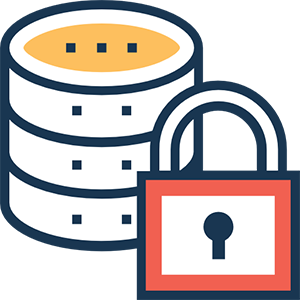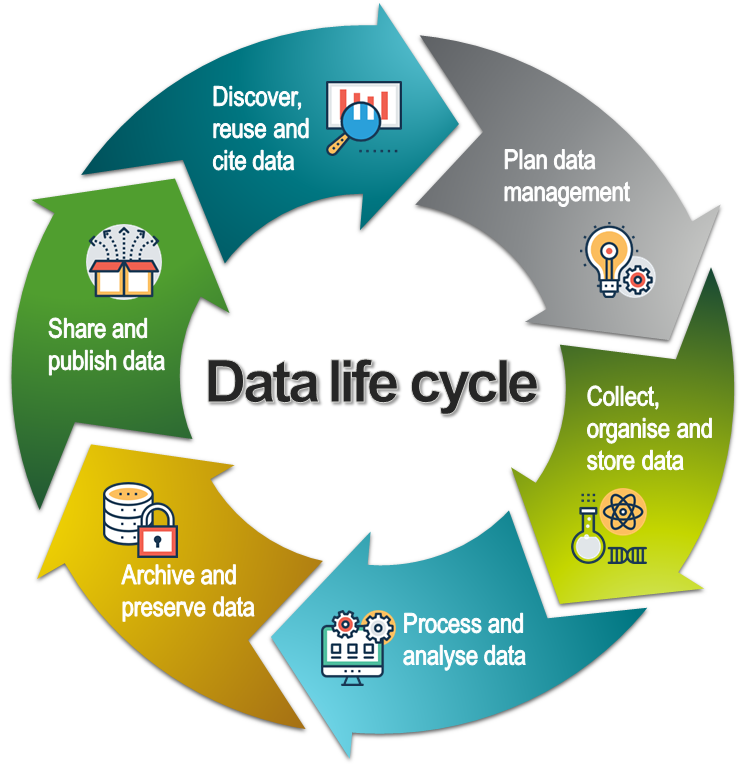Contact
Data Management Support (DMS)
dms@slu.se | www.slu.se/dms
Karl Pettersson, archivist
Vice-Chancellor’s Office/AIR
karl.pettersson@slu.se, 018-671302, 073-0605582

Archiving and preserving data involves a series of managed activities to ensure continued access. Here you will find guidance on how to preserve and maintain data in a secure environment so that it remains accessible, understandable and usable in the long term, as well as information on what kind of data must be archived and preserved according to Swedish law.
The main reason for archiving and preserving data is to ensure access to it – now and in the future. In Sweden, it is mainly the Archives Act (SFS 1990:782) that must be followed when archiving and preserving data. It stipulates that – as a general rule – all material produced as a result of research activities must be archived and preserved to ensure the right of access to public records, cultural heritage and research needs. This is also stated in the SLU's data management policy that says that research and environmental monitoring and assessment data generated at SLU are considered official documents and are subject to the constitutional principle of public access to official records. Thus, data must be, as a rule, released upon request and preserved in SLU's archives.
Compliance with the Freedom of the Press Act (SFS 1949:105) and the Public Access to Information and Secrecy Act (SFS 2009:400), as well as an increasing number of journal and funder guidelines, also involves data preservation (although as a consequence of compliance rather than a direct requirement).
In addition, archiving and preserving data appropriately increases credibility, allows for reproducibility and validation, and is an important component of making data FAIR.
Archiving and preserving data means that you need to consider carefully which parts of your research data that need to be kept and which don't. The process of selecting which data to keep and which to discard is called data appraisal. At SLU, data appraisal must be done in accordance with the regulations devised by the Swedish National Archives (as described in RA-FS 1991:1 and RA-MS 2013:7)
At SLU, you can preserve data in the SLU e-archive. Please note that data collected, generated, acquired, processed and analyzed as part of a research activity carried out at SLU, regardless of where it is stored or whether it is registered, is part of the SLU archive and, as such, subject to national legislation on the handling of official documents. Taking the active step to deposit the data together with adequate documentation and metadata not only means following this legislation, but also taking a step towards open science and FAIR data management.
Please note that depositing data in an external data repository is not considered archiving on behalf of SLU. If you publish data externally, you still need to make sure data are archived within SLU. Options other than the SLU e-archive could be on a SLU server or on a local server (department/unit level) together with registration in the SLU system for records management, Public 360. The person responsible for registry and archiving routines at your department, the "RA role", will be able to help with this. If you need storage for large amounts of data, you should contact the IT department.
It is important to note that in order for data to remain usable in the future, it must be actively managed during preservation, together with its metadata (and external data repositories do not usually take care of this). Digital sources can unfortunately degrade over time ('bit-rot'), so they need to be checked regularly to ensure that no degradation has occurred (e.g. by generating a checksum). In addition, file formats can become obsolete over time. To address this risk of obsolescence, files and data must be migrated to alternative formats (ensure that the characteristics of such file migrations are documented).
When depositing data in the SLU e-archive, there is support available on file format, documentation etc., and once the data are transferred, SLU's Archives, Information Management and Registration Unit is responsible for future migration.
When preparing data for preservation, you need to ensure that it is kept safe and that it can be accessed, read and understood in the future. Active steps to preserve data include good file management, adequate documentation, data security and protection, and storage.
An important aspect of data archiving and preservation is file management (i.e. folder structure, file and folder naming conventions, file versioning and choice of file format), particularly the choice of file format. Digital file formats tend to become obsolete over time, meaning that while the bits in a file may still be intact, the information in the file cannot be accessed and used. Choosing file formats that follow open standards with publicly available specifications, are non-proprietary, free of encryption and copy protection, widely used and lossless should ensure long-term preservation.
For data to be understandable and usable in the future, it must be archived and preserved with the appropriate metadata. Good metadata provides contextual information about the data itself, as well as the processes and analyses that have been performed on it. Metadata is also often a prerequisite for making data searchable.
For data to be reusable, it must be archived and stored securely, along with its documentation and metadata.
First, you need to ensure the security of the data by making sure that only authorised people can access the data to read, edit and use it. This should mean that the data and its metadata are safe from unauthorised access and use (e.g. manipulation, modification, destruction).
Second, if the data to be archived and preserved contains personal or sensitive information, additional measures must be considered to ensure protection where necessary (see Collect, organise, and store data and Process and analyse data for more information).
If data is allowed to be disposed of, it must be disposed of in such a way that the information cannot be recovered. This is particularly important if the data contains information that is classified as personal or sensitive (regulated under the Public Access to Information and Secrecy Act). In any case, simply deleting material from a file system is not enough, so other methods must be considered to ensure that the material cannot be recovered. Contact your department's IT coordinator or the SLU IT Department for more information on how to dispose of information securely.
This page is part of our introduction to data management. It covers the most common aspects of data management and includes best practice strategies, training resources and tips on data management tools. It is organised according to the data lifecycle (see below), a conceptual model that illustrates the different stages of data management.

The data life cycle model. CC BY SLU Data Management Support. All icons in the life cycle and on the pages are made by Prosymbols from www.flaticon.com.
Data Management Support (DMS)
dms@slu.se | www.slu.se/dms
Karl Pettersson, archivist
Vice-Chancellor’s Office/AIR
karl.pettersson@slu.se, 018-671302, 073-0605582